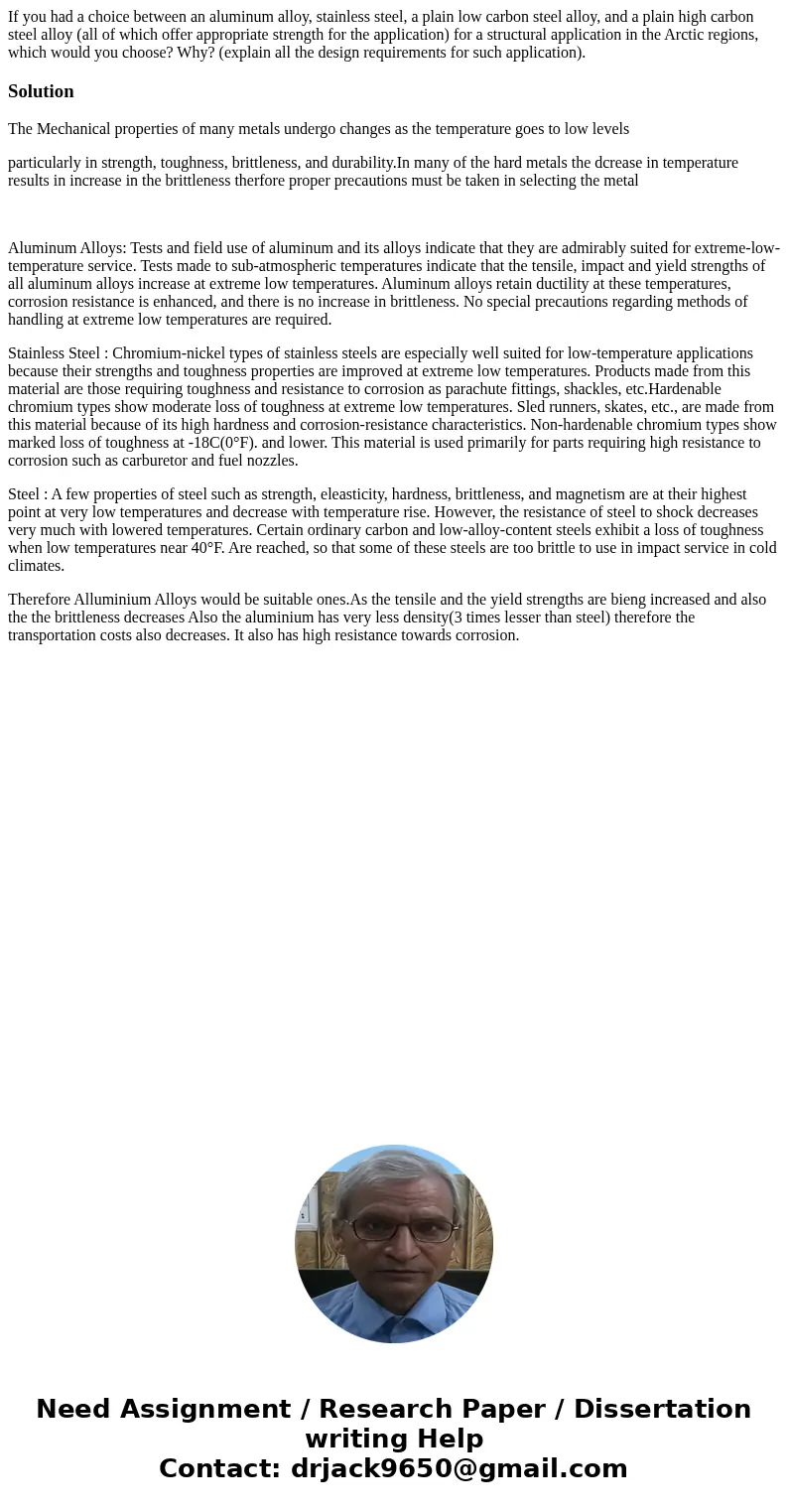If you had a choice between an aluminum alloy stainless stee
Solution
The Mechanical properties of many metals undergo changes as the temperature goes to low levels
particularly in strength, toughness, brittleness, and durability.In many of the hard metals the dcrease in temperature results in increase in the brittleness therfore proper precautions must be taken in selecting the metal
Aluminum Alloys: Tests and field use of aluminum and its alloys indicate that they are admirably suited for extreme-low-temperature service. Tests made to sub-atmospheric temperatures indicate that the tensile, impact and yield strengths of all aluminum alloys increase at extreme low temperatures. Aluminum alloys retain ductility at these temperatures, corrosion resistance is enhanced, and there is no increase in brittleness. No special precautions regarding methods of handling at extreme low temperatures are required.
Stainless Steel : Chromium-nickel types of stainless steels are especially well suited for low-temperature applications because their strengths and toughness properties are improved at extreme low temperatures. Products made from this material are those requiring toughness and resistance to corrosion as parachute fittings, shackles, etc.Hardenable chromium types show moderate loss of toughness at extreme low temperatures. Sled runners, skates, etc., are made from this material because of its high hardness and corrosion-resistance characteristics. Non-hardenable chromium types show marked loss of toughness at -18C(0°F). and lower. This material is used primarily for parts requiring high resistance to corrosion such as carburetor and fuel nozzles.
Steel : A few properties of steel such as strength, eleasticity, hardness, brittleness, and magnetism are at their highest point at very low temperatures and decrease with temperature rise. However, the resistance of steel to shock decreases very much with lowered temperatures. Certain ordinary carbon and low-alloy-content steels exhibit a loss of toughness when low temperatures near 40°F. Are reached, so that some of these steels are too brittle to use in impact service in cold climates.
Therefore Alluminium Alloys would be suitable ones.As the tensile and the yield strengths are bieng increased and also the the brittleness decreases Also the aluminium has very less density(3 times lesser than steel) therefore the transportation costs also decreases. It also has high resistance towards corrosion.

 Homework Sourse
Homework Sourse